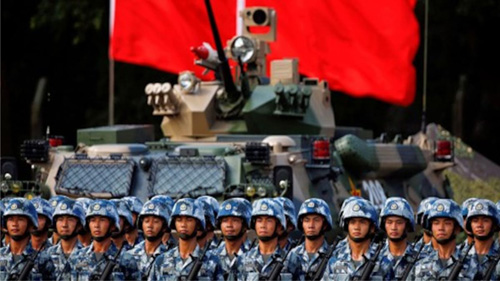Col (R) Muhammad Usman
THIS may seem needless to remind that BRI is a gigantic undertaking and baby of China with an outlay of exceeding $1Trillion. It stretches to three continents, involving 68 countries. This constitutes 65% population of the world with handsome GDP and vast reservoirs of resources. It is the largest infrastructure/investment initiative, ever conceived to plug infrastructure gaps to accelerate global trade and generate infinite growth in developing countries with equally healthy returns to investors. The altruism is its guiding light; mutual economic well-being, based upon growth/development and international trade however, its size and multiple dimensions renders it a wholesale case of geo-economics, geopolitics and geostrategic. BRI when operationalized would enable China to extend its trade reach to Eurasia and Africa.
It would not only accord China unassailable economic dominance but also enormous political clout internationally. By its implications, this contains within it seeds of a global conflict among potential competitors as has been happening historically since times immemorial; desire for food, land, material, fuel and mastery. Now US is the competitor which ruled world unilaterally since last three decades and still its will is unremitting. It has already signalled a cold war with China in more ways than one. One way adopted is to pressurize Pakistan on CPEC which is the flagship project of BRI thus, denying China a shorter/reliable route to an all-weather/deep water seaport at Gwadar while concomitantly, forcing China to tread through Strait of Malacca where US has the advantage.
For its own reasons, CPEC is also an anathema to India. Seeing convergence of interests with US albeit mutually exclusive, India brushed up its enduring tack to pretend itself a bulwark against China including CPEC. Of late, its belligerency touched peak when it threatened to attack AK and GB. Being a posturing bully, India temptingly expected to bag rewards including regional hegemony, international recognition/prestige/goodwill as of a world class player with ultimate purpose of permanent seat at UNSC and generous economic, military and scientific/technological assistance by US however, lady luck had different plans.
Probably, in order to simulate empty words with some element of reality, India raised its military base at Dault Beg Oldie (DBO) to a brigade strength. Efforts were also afoot to connect it with internal roads network. In Oct 2019, a road Darbuk-Shyok-DBO, was built to maintain brigade there. Conceptually, it was a potent move as DBO is just 8 KMs away from Karakorum Pass. This connects Pakistan with China and then roll downs to areas where CPEC exists and construction of Diamer-Basha Dam is underway. India bragged around to scuttle these projects, being in disputed territories belonging to it. Both are also equally vital to China symbolically as well as substantially. Besides, Indian moves were flagrant violations of status quo, mutually agreed upon with a potential to merge Ladakh into Indian Union. Regardless of what India actually intends to, mere possibility of such threats causes elements of uncertainty and ambiguity. These could impede economic activities because money is basically coward.
It holes up, just on whimper. Secondly, this could be construed a weakness on part of China to make BRI a success. China had to act and act firmly and it did it startlingly. In a planned move, it entered its 5000 troops in Galwan valley. They briskly captured nodal points in the area while physically beating Indians out thus, making Indian brigade at DBO operationally untenable. This eliminates Indian threat to CPEC. Indian response was mute and of low lying diplomacy to fetch some face saving. China offered some piffling concessions and Indian gleefully took them but mischievously planned to parade them as a result of military action. It boomeranged and this time, Indian troops were beaten to death with a clear message not to misjudge Chinese determination. Inevitably, India saw its salvation in tame surrender with humiliation, writ large at its forehead. India accepted it a fait accompli.
Another incident was of Nepal which added insult to its injuries simultaneously. Nepal along with other South Asian countries, is a part of BRI where China has invested considerably and is helping Nepal to free itself from Indian hold, being a landlocked country. Probably to cash in a fleeting opportunity or show solidarity with China, Nepal issued its new map incorporating its three areas under Indian occupation. The action of a tiny country like Nepal is a testimony that obituary of Indian hegemony over weak neighbours is just a few breaths away. This would certainly have domino effect. The cacophony of Indian might was also blasted by Pakistan in Feb last year when it encroached Pakistan’s airspace while acting boastfully on a precedent set by US after 9/11“either US would bring its enemies to justice or take justice to them”. Pakistan barely took 24 hours to teach India a stern lesson while sounding it in advance that now it is our turn and wait, it would come.
Above unmistakably bring three glaring points to fore. One, vaulting Indian ambition of hegemony was beyond its means. India was galloping ahead of its resources. Now it has been laid to rest for ever because earlier also in 1962 war with China, they were routed equally ignominiously. It is the confirmation that India has no spine for an oversize role. One could only assign it at its own peril. Two, China stands ready to back deed of BRI by force. Three, countries in bondage with BRI could have incentives from China to prop up themselves economically and politically.









